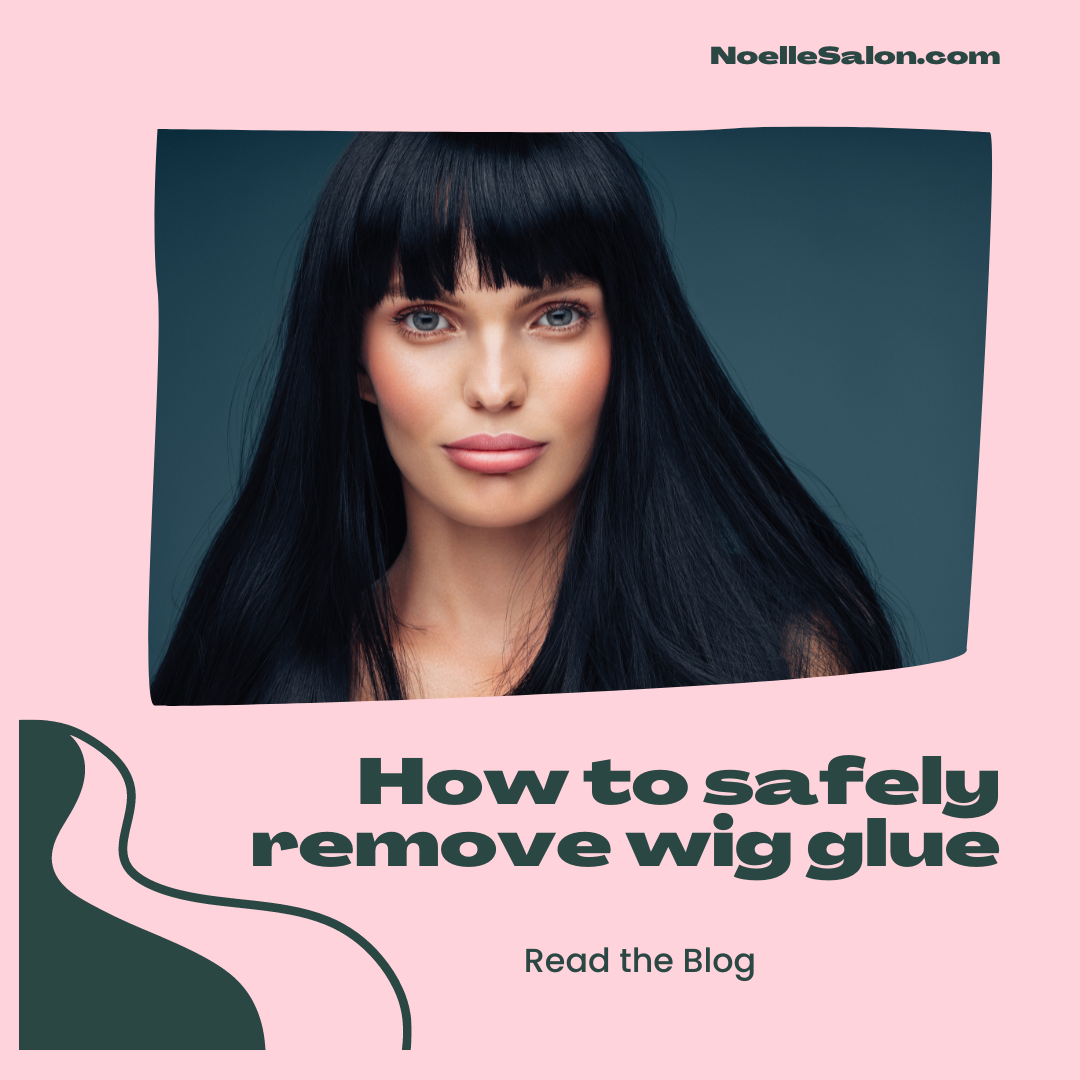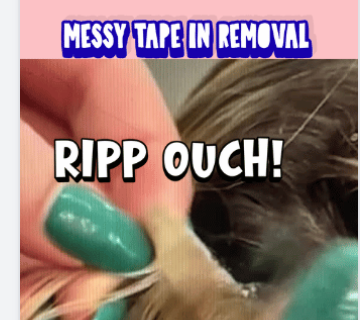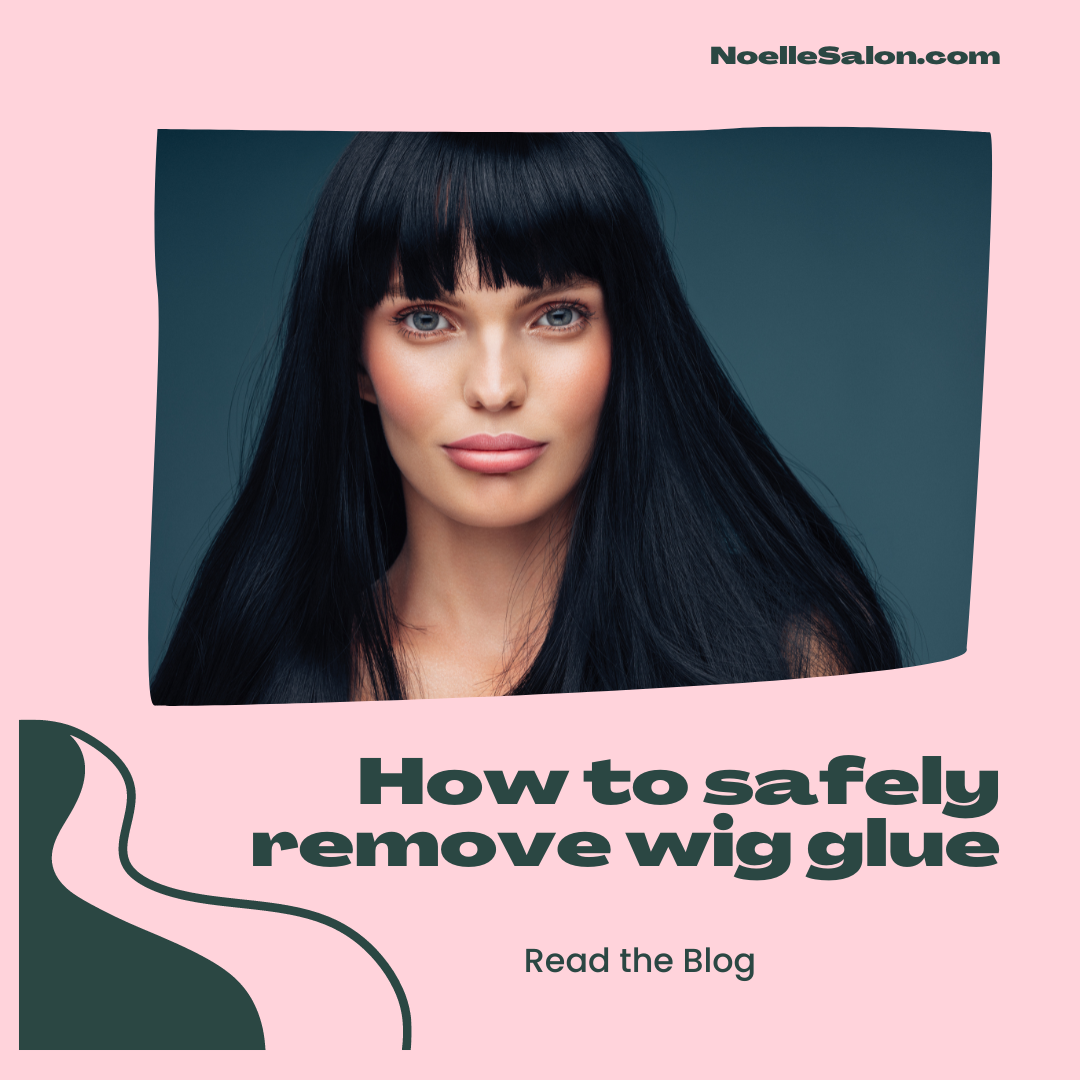
How to Remove Wig Glue from Skin and Hair: Quick Guide
Wig glue is a common way to hold wigs and hairpieces, including a hair wig. It helps create a natural look and offers a smooth appearance, but the clips of the wig are often used for added security. However, when you need to take off the wig glue from your natural hair, you should be careful and know the correct way to do it. You may consider waiting for a longer period of time to allow the glue to dissolve properly. This is important to prevent any harm. This article will show you how to remove the glue safely. You will find useful tips and ideas to help you take off your wig without damaging your hair.
Understanding Wig Glue and Its Effects on Hair
Wig glue, or wig adhesive, is made to stick hair systems to the scalp, making the installation process secure. It helps keep wigs secure for a long time, ensuring that the glue is evenly spread across the entire hairline. However, the strength of these adhesives means you need to use care and the right methods when you take them off. It is important to pay attention to your scalp and hair when using any glue product.
This guide will give you the tips and information you need for a safe wig glue removal process, including the most effective removal method and the crucial glue removal steps. We will look at what wig glue is made of and how it can affect your scalp and hair health, particularly regarding the material of the wig. We will also cover important steps to prepare for a successful glue removal process.
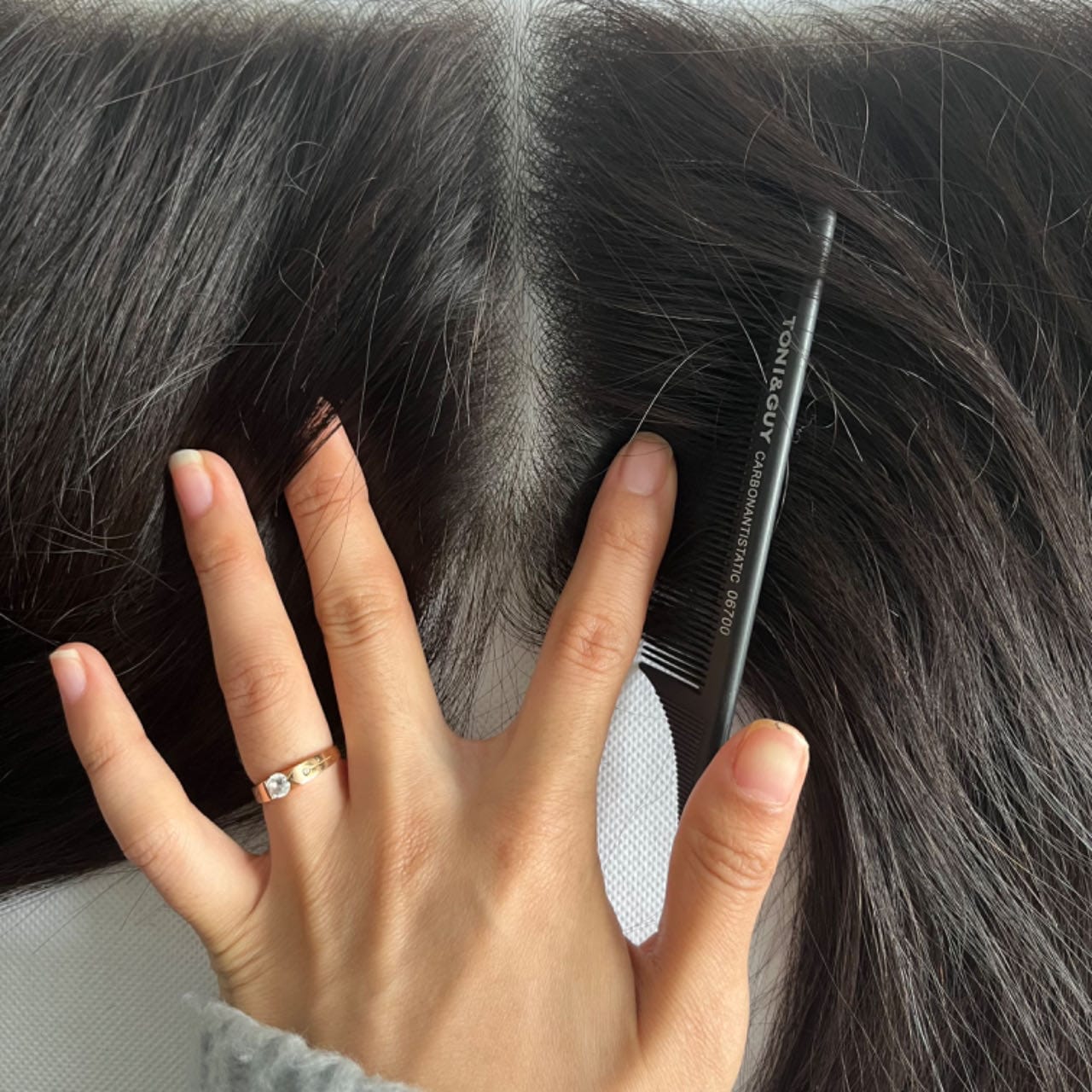 ALSO READ: https://noellesalon.com/blogs/hair-color-style/what-is-wig-density-and-why-it-matters
ALSO READ: https://noellesalon.com/blogs/hair-color-style/what-is-wig-density-and-why-it-matters
Wig Glue Composition
Wig glue has a mix of materials like polymers, resins, and solvents. These work together to stick the hair system to your natural hair. Polymers help the glue stick well, while resins add flexibility and strength. Solvents make the glue thinner, making it ideal for styles like the light yaki bob with an invisi drawstring, particularly with a density wig. This makes it easier to apply smoothly and evenly.
Knowing what wig glue is made of is important for choosing the right adhesive remover and ensuring you have the basic materials for the job. Different wig glues need certain removers to break the glue's bond properly, ensuring you maintain an optimal condition for your hair and scalp. If you use the wrong remover, it can be hard to get the glue off, and it might damage your hair and scalp.
Always check the instructions that come with your wig glue and adhesive remover. Following the tips from the maker helps protect your hair and makes removal easier.
Impact of Wig Glue on Scalp and Hair Health
While wig glue is usually safe for most people, using it wrong or for too long can harm your scalp and hair, impacting the overall life of the wig, including those with invisible knots. One worry is scalp irritation, especially for those with sensitive skin. The glue can cause a great deal of time to redness, itching, or allergic reactions.
Another issue is hair loss. If wig glue isn't taken off properly, pulling your hair while removing it can cause breakage. This can damage hair follicles and lead to hair loss.
It's important to take care of your scalp by keeping it clean and moisturized. Washing your scalp regularly helps get rid of glue, sweat, and other product residue. Also, using gentle, hypoallergenic wig glue and adhesive removers can lower the chance of irritation or adverse reactions. If you have ongoing scalp problems, it's best to talk to a dermatologist or trichologist for advice.
Preparing for Wig Glue Removal
Before you take off your wig, it is important to prep first. This helps make the removal easier and smoother. Just like getting your hair ready for styling is helpful, preparing your hair for wig removal ensures the best result with the good size of this line of wigs, specifically, the name of this line of wigs in mind.
A properly prepared wig will come off easily, and extra care will help ensure it leaves less residue and lowers the risk of damaging your hair strands, especially when handling the detailed lace part of the wig. To get ready, follow these two steps: know what type of wig glue you used and collect the right tools and products to help with the removal process.
Identifying Your Wig Glue Type
Different types of wig glue need different ways to be taken off. It is important to know what type is used on your lace front wig. Lace wig glue comes in many forms like liquid adhesive, tape, or bonding strips. Each type has different strengths and formulas.
Knowing the glue type helps you choose the best balayage body wave lace front shadow root blendaway HD glueless lace wig adhesive remover and the right method to take it off safely, including options like hd lace closure and a part wig. For strong glues, solvent-based removers are usually best. For sensitive skin, oil-based removers are gentler.
If you do not know what type of glue is used on your lace wig, it's a good idea to ask a professional hairstylist. They are skilled in wig application and removal, and they can help you find the best option for glue removal. Trying to remove the glue without knowing could make it harder to remove or damage your lace wig and natural hair.
Essential Tools and Products for Effective Removal
Having the right meticulous tools and delicate tools, such as cotton swabs or small brushes, and products is very important for safely removing wig glue, especially from the detailed parts of the wig, without using harsh chemicals. These items help the process go smoothly and reduce the chance of hurting your hair and scalp. Here is a list of what you will need:
-
Wig glue remover: Choose a remover made to dissolve wig glue that is also gentle on your skin and includes a mild makeup remover and cleanser designed for human hair wigs.
-
Oil-based solution: You can use olive oil, coconut oil, or baby oil to help loosen the glue for easier removal.
-
Cotton balls or pads: These are great for applying the remover or oil to the glued areas.
-
Warm water: This softens the glue and makes it easier to take off.
-
Mild shampoo and conditioner: They help clean and moisturize your hair after you remove the glue.
By getting these essential tools and products ready beforehand, you will be prepared to safely and effectively remove your wig glue. This way, your scalp will be clean, and your natural hair will stay undamaged.
w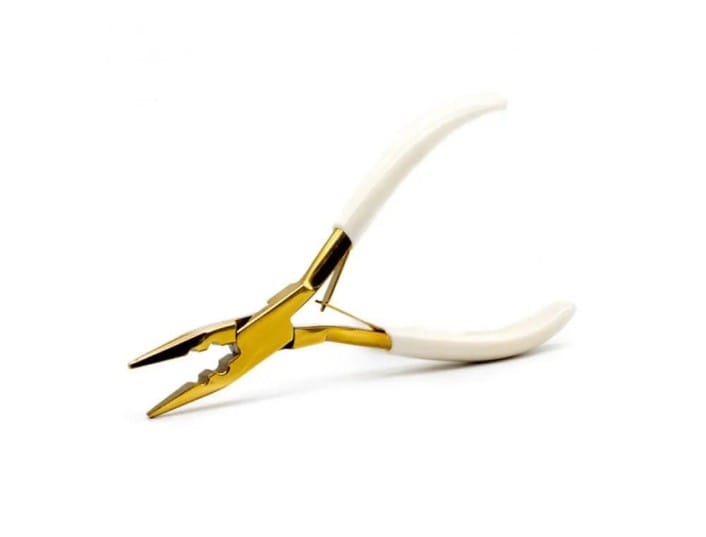
Step-by-Step Guide to Removing Wig Glue
Once you have your supplies ready, follow these simple steps to safely take off the wig glue.
We will guide you through each step carefully. This will help make sure you have a good and easy experience. You will learn how to loosen the glue and clean your hair well.
Step 1: Apply Oil-Based Solution to Loosen the Glue
The first step to ensure a successful removal of your wig glue is to use an oil-based solution like makeup remover oil. Apply it generously to the glued areas. The oil goes into the glue. This helps to soften it and makes it easier to remove from your hair. Coconut oil and olive oil are great choices because they work well and are a good choice for gentle care on the skin, helping to avoid further irritation while using a mild cleanser afterward. They are good for sensitive skin too.
You can also use warm water to make the petroleum jelly oil work better. Take a cotton ball or pad and dampen it with warm water. Then apply a good amount of your chosen oil. Gently rub or dab the oil on the detail areas of the glued sections. Let it sit for 10 to 15 minutes while referring to helpful installation tutorials if needed.
This process of softening is very important. It not only weakens the glue's hold but also helps to stop hair breakage, especially when using bye bye knots series units like the invisible knots glueless wig knotted hair of this wig. This is because removing the wig without loosening the glue can cause damage.
Step 2: Gently Peel Off the Wig Starting From the Edges
Once the oil products have worked into the glue, you can start to gently take off the curly wig. Begin at one edge, like the lace frontal, and carefully lift it away from your skin. You may feel a little resistance as the glue comes free, but try not to pull or tug. This can harm your natural hair.
If you feel resistance, don’t force it. Instead, add more oil and warm water to the spot. Let it soak for a few more minutes to create juicy finger coils for the body wave wig. This will help loosen the glue better, stopping any damage to your natural hair or the wig cap.
Keep peeling slowly and patiently, moving around the edges of the wig. As you peel, you may see some glue residue on your hair from the installation of the wig. Don’t worry about it—we’ll take care of that in the next step.
Step 3: Wash Your Hair with a Mild Shampoo to Remove Residue
After you take off your wig, wash your hair well with a mild shampoo and rinse with cold water. This helps get rid of any glue residue left behind, especially around the bottom of the wig mesh. The oil used earlier breaks down the glue, making it easier to wash out, and you may follow up with a gentle cleanser for your scalp care.
Gently lather the shampoo and massage your scalp with your fingertips, paying extra attention to where the glue is. You can use a cotton pad to gently wipe the area if needed. Do not use strong shampoos or scrub too hard because that can take away your scalp’s natural oils and might irritate it, affecting your natural growing hairline.
Warm water can help dissolve and wash away any remaining glue, making your hair and scalp clean and fresh. Then, use a moisturizing conditioner to keep your hair soft and healthy.
Conclusion
Whether you wear a wig or are thinking about it, knowing how to remove wig glue safely is important. You want to avoid hurting your hair. By using the right steps and tools, it's easy to care for your natural hair after you remove the wig. Keeping your scalp and hair healthy should come first in this process to prevent any damage. If you need help or have questions, feel free to contact our experts for personal advice and support. Your hair needs good care, so be gentle and responsible when you remove wig glue.
Frequently Asked Questions
What is the safest way to remove wig glue from hair?
Using natural oils, such as olive oil, to loosen adhesive is usually safe for most people, helping to achieve a natural look. This is especially true for those with sensitive skin. However, during the cleaning process, it is always a good idea to use an adhesive remover made for this purpose. If you have any doubts, seeking professional help is recommended.
Can removing wig glue cause hair damage?
Removing wig glue the wrong way can cause hair to break or, in serious cases, even lead to hair loss due to excessive friction. To avoid problems, use the right methods to remove the glue, be gentle, and keep your scalp healthy when wearing a lace portion of the wig. Following a good hair care routine can help reduce the risk of bad reactions.

